UF/IFAS partnered with local rancher Chance Clay to conduct a potato silage trial for beef cattle. Livestock Agent with St. John’s County (Tim Wilson), UF Animal Science Beef Specialist (Matt Hersom) and Agriculture Agent with Putnam/Flagler County (Wendy Mussoline) assisted Chance Clay with a silage project on his farm using cull potatoes. Chance wondered what possible value-added product could be made from all the cull potatoes that are generated in Hastings during the potato harvesting season. With the assistance of a great team effort from UF/IFAS, his wonder became a reality.
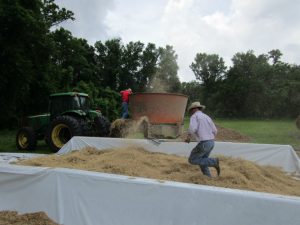
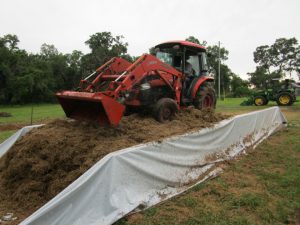
After a successful pilot-scale trial conducted in 55-gallon drums, the project was scaled up to a farm-scale trial. We created a 40-cubic yard silage pit using concrete road barriers and 5-mil plastic liner to ensile the material. Ingredients included 7000 lbs of bahaigrass hay (10 round bales) donated by Teddy Sieler of Putnam County and 16,450 lbs of cull potatoes donated by Ben Wells of Hastings. The ingredients were added to a PTO-powered, roto-grinder that mixed and ground the material into a moist mash that was blown into the silage pit. UF/IFAS Extension interns George Laibl (Putnam/Flagler) and Taralee Hines (St. John’s County) assisted with weighing and loading the cull potatoes into the grinder. Chance consistently compacted the mash to remove as much air as possible to promote efficient fermentation. Wendy made sure that the ratio of materials was appropriate to provide ideal moisture concentrations to promote effective fermentation. Matt and Tim maneuvered the large equipment and made sure the witch’s brew was fed correctly into the flail chopper. Putnam County Commissioner Chip Laibl came out to provide some moral support and encouragement. Once the compacted mash was formed, we wrapped it like a burrito in silage plastic and sealed the open edges. In approximately 70 to 90 days, we will collect silage samples and send them to Dairy One Forage Laboratory for nutritional quality, fermentation efficiency, and a toxicological evaluation. As long as the mash is suitable for consumption by cattle, we will conduct an informal palatability trial to determine if the cattle actually like to eat potato salad.

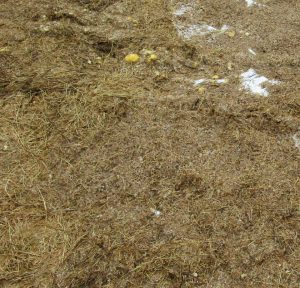

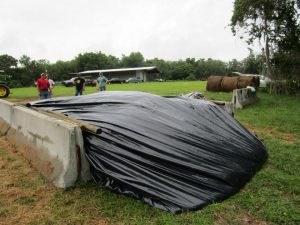
There are several benefits associated with this approach if it is successful. Low-quality hay that has been stored too long or lost its nutrient value has the potential for regeneration. Cull potatoes that are plentiful and commonly discarded during the harvest season can be utilized for a beneficial purpose. The mash can be ensiled and stored for the winter season when beef cattle forage is scarce. Repurposing agricultural waste into a valuable end product and providing high-quality forage to livestock is certainly an important priority in sustainable agriculture. Special thanks to the UF Dairy for lending us the grinder, the UF/IFAS Research and Education Center in Citra for transporting the equipment, and the UF/IFAS Hastings Agriculture Extension Center for funding and coordinating the activities. Its truly amazing what can be accomplished with minimal resources when a creative, multi-faceted team works together.
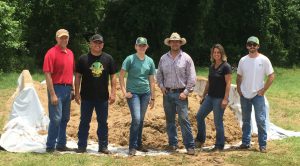
 1
1
